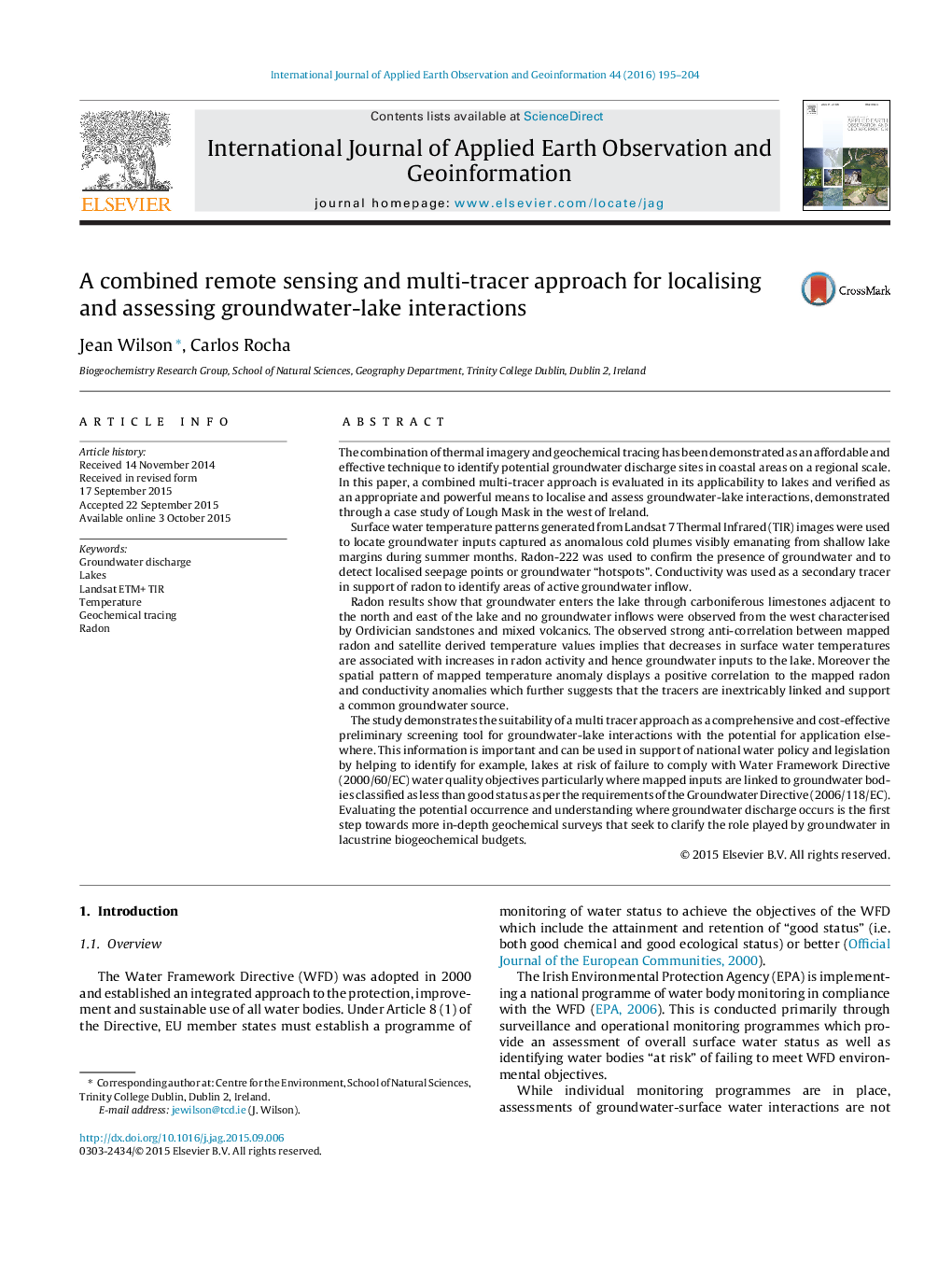| کد مقاله | کد نشریه | سال انتشار | مقاله انگلیسی | نسخه تمام متن |
|---|---|---|---|---|
| 6348553 | 1621814 | 2016 | 10 صفحه PDF | دانلود رایگان |
- A multitracer approach is applied to localise lacustrine groundwater discharge.
- Satellite derived cold water plumes clearly emanate from the lake margin.
- Mapped radon and conductivity anomalies support a common groundwater source.
- Results are promising despite mismatch between image acquisition and survey dates.
- Successful application of the approach is demonstrated for a lake in Ireland.
The combination of thermal imagery and geochemical tracing has been demonstrated as an affordable and effective technique to identify potential groundwater discharge sites in coastal areas on a regional scale. In this paper, a combined multi-tracer approach is evaluated in its applicability to lakes and verified as an appropriate and powerful means to localise and assess groundwater-lake interactions, demonstrated through a case study of Lough Mask in the west of Ireland.Surface water temperature patterns generated from Landsat 7 Thermal Infrared (TIR) images were used to locate groundwater inputs captured as anomalous cold plumes visibly emanating from shallow lake margins during summer months. Radon-222 was used to confirm the presence of groundwater and to detect localised seepage points or groundwater “hotspots”. Conductivity was used as a secondary tracer in support of radon to identify areas of active groundwater inflow.Radon results show that groundwater enters the lake through carboniferous limestones adjacent to the north and east of the lake and no groundwater inflows were observed from the west characterised by Ordivician sandstones and mixed volcanics. The observed strong anti-correlation between mapped radon and satellite derived temperature values implies that decreases in surface water temperatures are associated with increases in radon activity and hence groundwater inputs to the lake. Moreover the spatial pattern of mapped temperature anomaly displays a positive correlation to the mapped radon and conductivity anomalies which further suggests that the tracers are inextricably linked and support a common groundwater source.The study demonstrates the suitability of a multi tracer approach as a comprehensive and cost-effective preliminary screening tool for groundwater-lake interactions with the potential for application elsewhere. This information is important and can be used in support of national water policy and legislation by helping to identify for example, lakes at risk of failure to comply with Water Framework Directive (2000/60/EC) water quality objectives particularly where mapped inputs are linked to groundwater bodies classified as less than good status as per the requirements of the Groundwater Directive (2006/118/EC). Evaluating the potential occurrence and understanding where groundwater discharge occurs is the first step towards more in-depth geochemical surveys that seek to clarify the role played by groundwater in lacustrine biogeochemical budgets.
Journal: International Journal of Applied Earth Observation and Geoinformation - Volume 44, February 2016, Pages 195-204
